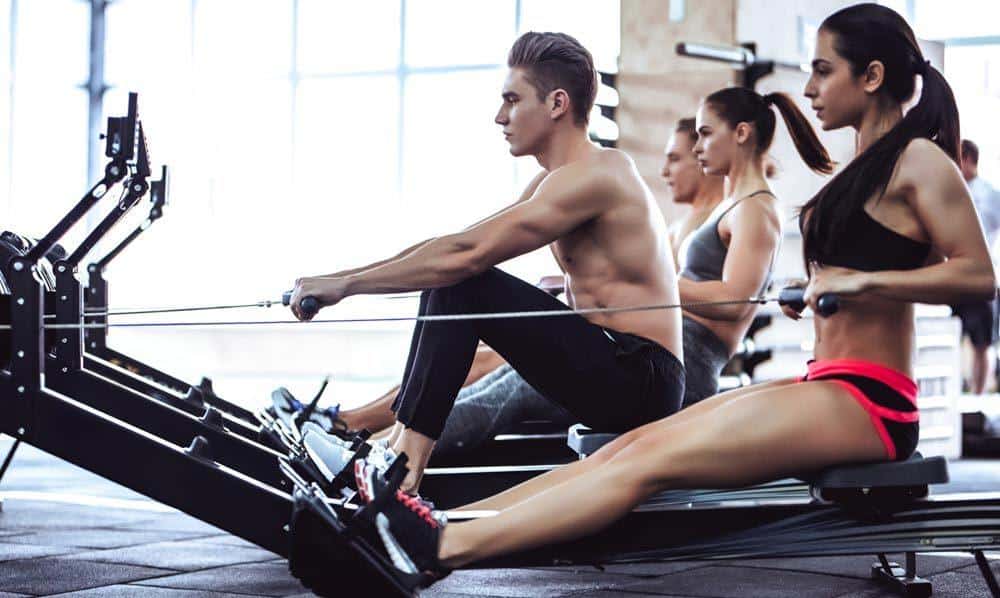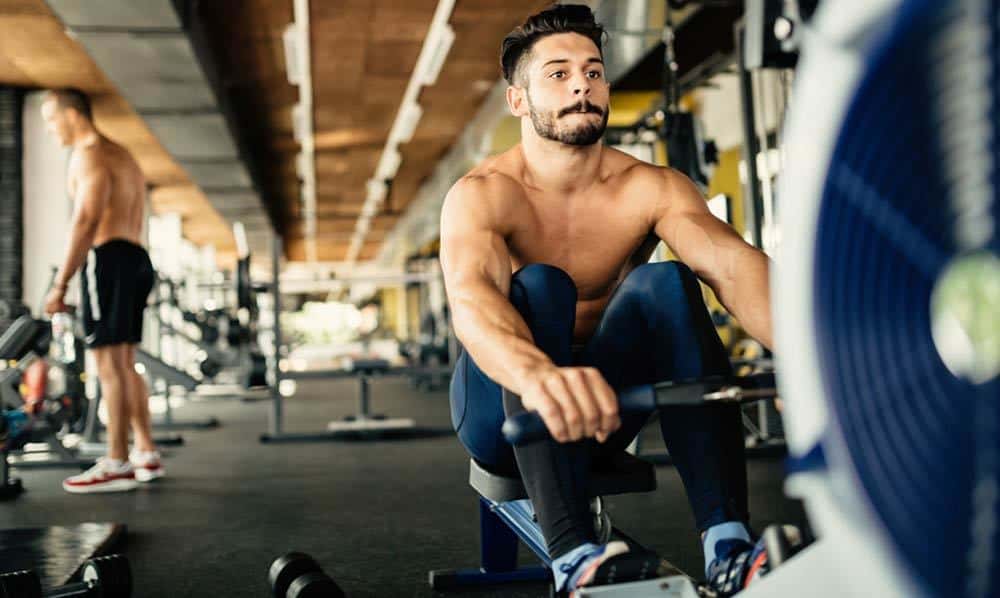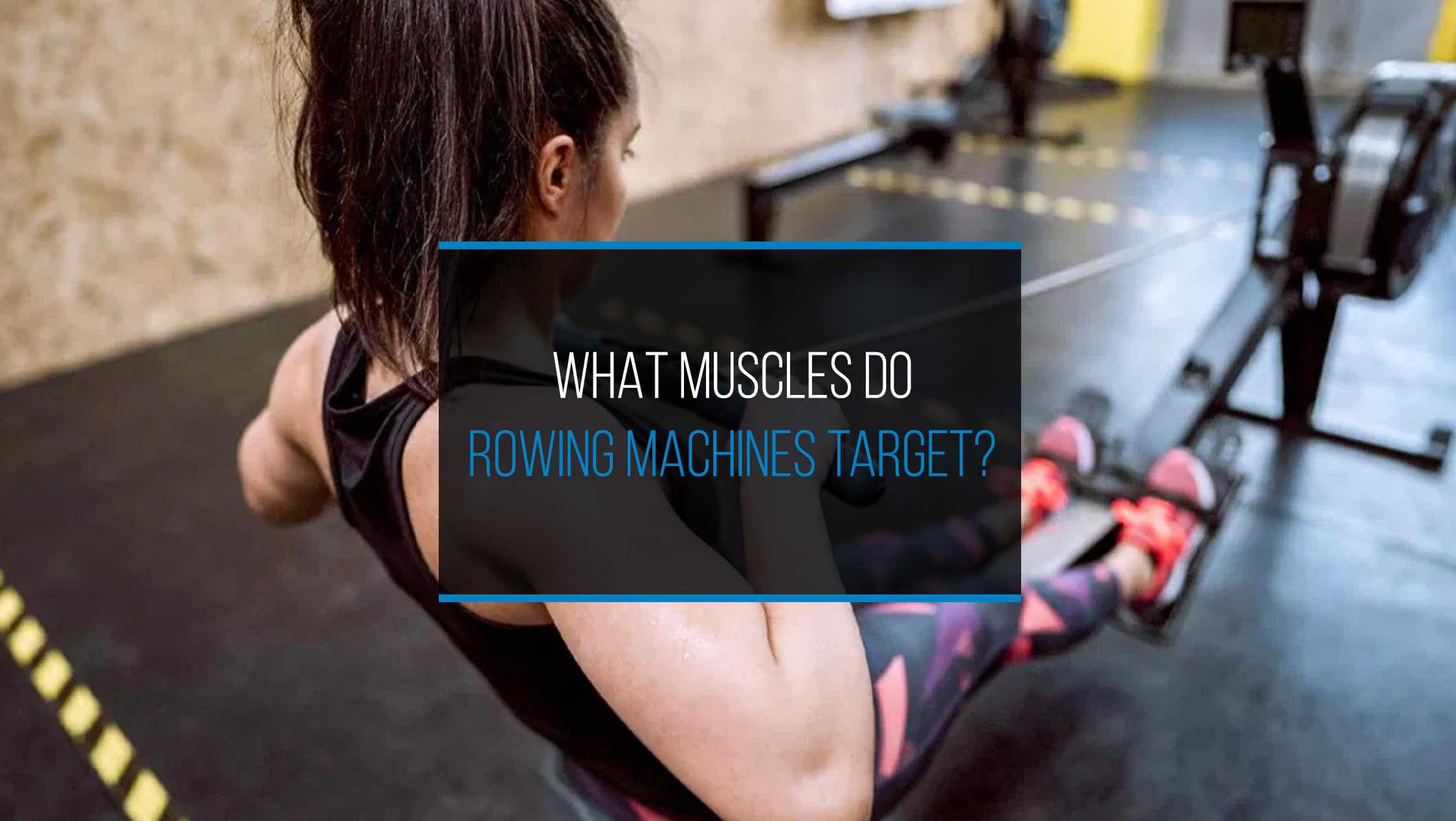Rowing machines are increasing in popularity among health and workout experts. If you are interested in rowing machines, you might wonder about the direct effect it will have on your muscles. This article will take an in-depth look at rowing machines and the muscles that target within your body.
So, which muscles do rowing machines target? rowing machine will affect the upper body, lower body, and abs. This will include the leg muscles, arm muscles, shoulders, back, and abs.
However, to have a bigger impact on muscles, other factors have to be considered, including technique and individual circumstances. Read on this article and determine whether the rowing machine is worth it as a workout tool.

The Specific Muscles Engaged while on a Rowing Machine
For there to be some changes to your muscles after the workout, you will need to effectively utilize all the muscles, while working out, as per rowing instructions. This means that you should follow the prescribed regimen, and not apply the wrong muscle, or utilize only one muscle for a workout that requires you to use more than one muscle.
To better understand this, let’s take a look at which muscles are used where:
1. The catch
This is what begins the whole rowing stroke, where the rower is positioned at the front of the machine to start rowing by sliding the seat all the way forward. This exercise is done through the rower bending their knees as close to the chest as possible while ensuring the shins are vertical to the ground.
Which muscles are strengthened by these movements?
- Triceps
The exercise will positively affect your triceps by extending your arms and elbows while rowing through moving the handlebar.
- Leg Muscles
Holding the shins in a vertical position can help increase your hamstrings, calf muscles, and glute muscles.
- Back Muscles
During the catch, the back muscles will also be affected, with the latissimus dorsi muscles seeing the bulk of the exercise’s effects. These muscles are responsible for controlling the arms extensions, while the trapezius muscles control the shoulder blades.
The rhomboids, which are the muscles between the spine and shoulder muscles, also support the trapezius.
2. The Drive
After the catch, the rowing exercise’s next stage is the Drive stage, where the person doing the exercise performs the rowing stroke. What happens is that the person rowing at this stage will push their feet off from the foot stretchers until their legs are fully extended.
Here the person rowing the exercise machine is required to engage their core, using their hips to swig their bodies to the upright position, and with their shoulders and arms engaged, pull back the handlebars toward their sternum.
The steps should be done in one swift movement.
Which muscles are strengthened in this case?
- Legs
One of the main areas of the body directly affected is the leg muscles, including the hamstring and the glutes. During the drive motion, their contraction ensures the hips as the upper body slightly leans back at a 45-degree angle and ensures increased muscle strength in these areas.
- Shoulders
Another area that will see increased muscle growth at the drive stage of rowing is the shoulders. This happens when the leg muscles push the body back against the rails, the shoulder muscles will contract, resulting in increased muscle growth to the shoulder.
- Biceps
Your biceps will be used in rowing by providing the strength to pull back the handles during the drive stage. This happens once your hands reach the knees.
- Abs
As the handlebar is pulled back towards your sternum, the abs will contract to ensure they keep the body stable, which in turn, after constant exercise, will result in an increase in muscle for these areas, and also help burn belly fat.
- The Back
During the drive stage, both the lower and upper back are activated to help provide stability to the torso’s upright position to ensure strength and balance as the handlebar is pulled back to the ribs.
3. The Finish
The third phase of the rowing stroke exercise will require core support to stabilize the body as it hinges backward at the hips. It helps provide the momentum to extend the legs, to help bring the handle in towards the sternum.
Your upper arms will also rotate and help simulate a rowing motion.
Which Muscles are affected here?
- Torso
Your torso comprises at least five different muscles, including the rectus abdominis, external abdominal oblique, the transverse abdominis, the pyramidal, and the internal abdominal oblique.
These muscles are activated during the finishing part of the rowing exercise, ensuring increased stability to the whole body.
- Biceps
As your arms rotate to perform the rowing exercise’s finishing stage, the biceps will contract to help stabilize the back muscles, which will continue to increase in mass with routine exercise.
- The Recovery
The last motion on the rowing stroke is the recovery phase, described as the three first steps done in reverse.
The rowing at this stage is done by extending the arms towards the flywheel in front of you parallel to the ground. Lean forward from your hips, and using the hamstrings, bend your knees and pull forward.
Keep pulling until you rest at the initial beginning ‘catch’ position. This stage will require a lot of control to ensure that it activates the most muscle groups.
Which Muscles are affected here?
- Triceps
During the recovery phase, the triceps will be activated to help ensure your arms are extended forward.
- Upper legs and Calves
During the recovery phase, the legs, specifically the upper and lower legs muscles, including the calves, glutes, and hamstrings, contract as you go back down the rail to the starting position.
Apart from the leg and triceps muscles, the recovery phase also helps the neck, hands, and chest. This means that through one simple stroke, nearly every skeletal muscle in the body will be activated.

More Benefits of Using the Rowing Machine
- Cardio and Resistance
Apart from the skeletal, leg, and arm muscles, there are several added benefits to using the rowing machine, including the impact on your cardiovascular system, heart, and lungs.
Rowing is also perfect for people with joint pains and injuries. Rowing is also different from running or jumping as it is a zero impact and non-weight bearing. This means it will be effective, especially for people with leg and joint injuries, reducing any stress to these points.
- Aerobic and Anaerobic Benefits
The rowing machine will have an impact on the aerobic and anaerobic aspects of your body. This means you can utilize both oxygen and lack of it to create energy. Anaerobic exercises can be explained as the type of burst of energy that lasts up to 30 seconds, such as a deadlift.
On the other hand, aerobic exercises utilize oxygen to create energy, such as walking or running, and create a large amount of energy but in slow supply.
- Helps Burn Fats
The rowing machine is also perfect for people interested in losing some weight. Apart from increasing your calorie burn as you work out, the rowing machine will also help you build more fat-burning tissue while helping amplify the after burneffects.
Afterburn effects are the calories your body continues burning after the workout.
Rowing is a full-body workout regime that requires all the muscles and cardiorespiratory system to shift to overdrive.
This type of exercise, being that it may become intense, may burn up to 300 calories in thirty minutes for a 155-pound person.
- Increased Endurance
If you are constantly exhausted with a rowing workout, it means you need a little bit more training. Consistency is key, and at first, although exhausting, keeping at it will have some long term benefits and help you increase endurance and provide more energy.
With increased exercise, you will also gain more stamina and also boost your metabolism.
- Convenient
You don’t have to live or be near a water boy for you to enjoy some rowing; rather, a rowing machine will provide the same comforts from your home. Workouts may seem unappealing, but a rowing machine resembles a well-loved hobby, which may do the trick in convincing you to exercise.
- Affordable
You can find the rowing machine at a bargain price of under $200 if you find the right store. Take your time before making a purchase, and ensure you go through enough websites to find the best deal.
- Ease of Use
Compared with other gym equipment, the rowing machine is relatively easy to use and perfect for beginners before starting; ensure you are aware of the best rowing techniques as it will help maximize the output from the workout.
Your feet should be secure in the stirrups with the shins at around a 90-degree angle to the floor. Keep the core engaged by keeping the back straight and row in a fluid motion.
- Great for People of all Fitness Levels to Try
The rowing machine can be used by both experienced and beginners in the fitness world. The exercise machine has also been deemed safe for blind and low vision people.
- Meditative
While there is an association between the outside boating experience and the mind-body connection, the indoor rowing machine has the same. Through the smooth gliding motions you make while exercising, it is common for people to feel a bit relaxed, with the mind going on autopilot.
Rowing is also known to release endorphins that help reduce stress.
- Great Alternative to Treadmill or Elliptical
Unless you have a passion for boating, most people will overlook the rowing machine in favor of the treadmill or elliptical. However, once a good comparison is made, you may end up opting for the rowing machine.
Looking at the treadmill as an example, it mainly focuses o the lower body while the elliptical machine works on the upper and lower body. On the other hand, the rowing machine, apart from working on both the lower and upper bodies, also does a number on the abs.
Rowing like a Pro
According to josh Crosby, the rowing world champion and the co-creator of the IndoRow machine and shockwave, learning to row has been portrayed as a complicated and intimidating exercise not.
Here are some mistakes to avoid on your way to rowing like a pro:
- Forgetting to check the Damper Settings
Most people new to rowing machines will avoid adjusting the damper settings. If the level is on a higher setting, you may feel the effect of rowing a heavy rowboat, which may end up exhausting your muscles.
- Rowing with only the Arms
Most people will use their arm strength while rowing, which is the wrong way of doing things. Putting too much pressure on the hands may injure them, out of too much strain.
The right way to do to should be a combination of lower body strength and upper body strength while rowing.
- Mixing Up the Workout
Using both the legs and arms simultaneously while rowing might seem like the right thing to do, yet it may cause some injury.
The right way to row should be the three-stroke process, which involves pushing first with the legs, after which you pivot backward with the hips allowing your shoulders to press the pelvis. Pull the arms towards the chest, after which you can reverse the order and go back to where you started for another row.
- Hunching Your Back during the Stroke
Many people, especially those working in offices, have the habit of wounding their backs while seated, which is a habit that may translate to the rowing machine.
The best practice here to avoid unnecessary strain on the back is sitting in a stacked posture and focusing on turning your abdominal muscles. Relax your shoulders and allow the spine to be neutral.
- Banging Your Butt into Your Heels or Rushing
You are in motion rowing away at the rowing machine; however, the seat keeps slamming in the front of the rower, plus your body keeps jerking forward uncontrollably.
Take account of the timing of your strokes in a 1:2 count. When the legs are pulling, the arms should be pushing, with the second part of the stroke being more relaxed and controlled. This will help prevent the seat from smashing to the front of the rower.
Take Away
The rowing machine will engage nearly all muscles in your body, making it an effective machine for gaining all-round muscle mass. However, it is important to combine the rowing machine with other workout forms and equipment such as the treadmill to get even more effective results.
Depending on what you are looking to do with the rowing machine, either increase mass or reduce weight, diet will be a huge part of an effective workout regimen.
Finally, with all the information provided, what are you waiting for? Get on to the rowing machine and start rowing your way to a healthier lifestyle.

